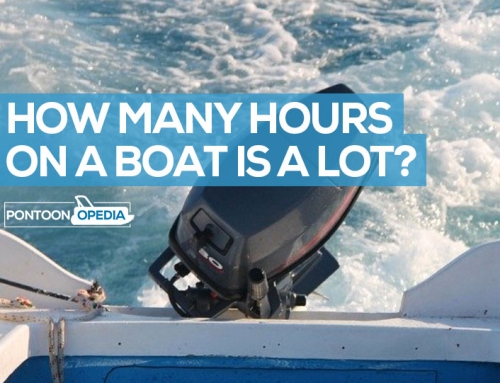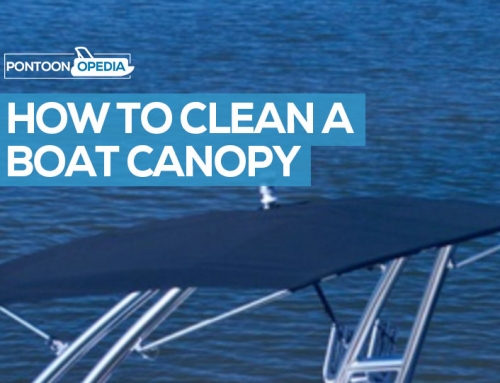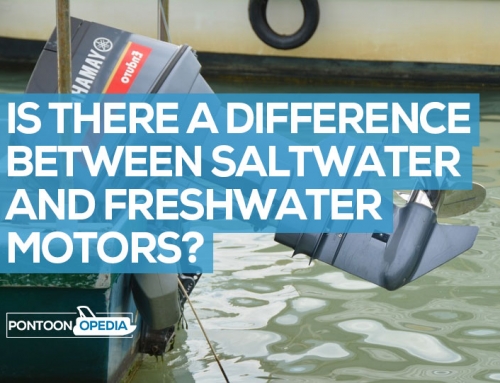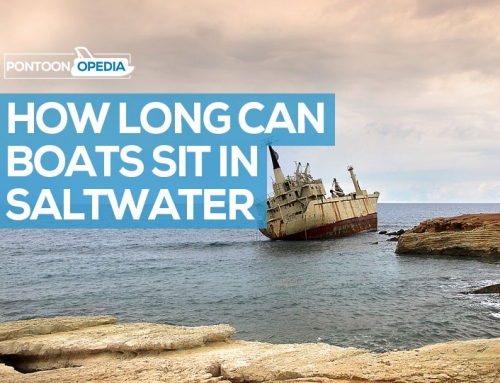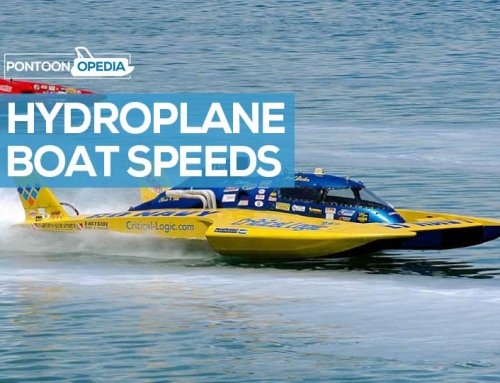I’ve not had this problem personally, but it frequently comes up on boating forums, so I looked at various websites to gather a set of similar problems, including the recommended solutions. You can see examples of questions and answers I found below.
First up, here’s a list of possible causes if you have a low wide-open throttle (WOT) RPM which have been written in no particular order.
12 things to check if your boat engine won’t reach operating RPM
- How is the fuel condition? Do you have old fuel in your system?
- Are the propeller blades damaged or has it been knocked?
- Is there marine debris and scum on the outdrive or hull?
- Do you have poor cylinder compression?
- Is the carburettor defective or has it been recently changed?
- Is the engine too hot and over-heating?
- Is the engine timing out or ignition system not operating correctly?
- Is there a problem with the fuel pump pressure and vacuum?
- Is your boat over-loaded with weight (gear and passengers)?
- Do you have an incurred gear ratio in outdrive?
- Are your coil signal wires crossed or incorrectly configured?
- Is air intake restricted in the carburettor?
- Is the exhaust system restricted?
If your boat still won’t go over 3,000 RPM under load after making those simple checks, then here are some real-life issues from boating forums, with responses from other boat owners.
Problem 1: Cranks quick but won’t go over 3,000 RPM
“I own a 1987 225 Johnson Ocean Runner. It used to run absolutely fine until last month, but I’ve been having trouble getting it started off the marina recently. I had an outboard mechanic look at it, and he checked the power pack. I’ve switched out the power pack, and it didn’t resolve the problem, and also changed the water separator and fuel filter. It now cranks very quickly, but the boat won’t go over 3,000 RPM under load and doesn’t plane off. The plugs have also been changed, please advise!”
The responses:
- Have you had the carbs rebuilt?
- Have you taken a compression reading on the cylinders?
- It could be the shift cut-out switch being shorted, which will stop sparks on the 3 cylinders, placing the motor into SLOW mode.
- There could be some crossed primary wires on the pack to the coil side.
The solution that worked:
It was connections on the shift interrupter which is found on the lower right (starboard) near the connection to the shift cable.
The coil signal wires were crossed, as the guy who couldn’t get his boat over 3,000 RPM under load said this:
“When going to the coil I see the blue and orange on the top, in the middle there is orange, and then on the bottom, orange and green on the V6. Do you think this could be the issue causing the problem?”
This was exactly where the problem was occurring, as the coil signal wires were crossed and cylinders ended up firing at the wrong time as they will be fighting each other, which can even lead to damage to a piston.
The guy fixed things up by doing this:
“I found that since the wires on each side of the power pack were not the same lengths, the shortest one went to the top coil. I looked at look at the color coding in the manufacturer manual and could then see that orange and blue should be in the middle and the orange was on top. Switched the two and it’s running like a dream again.”
Problem 2: Boat won’t get up on a plan or go over 2,600 RPM WOT
“Completely out of nowhere, my beloved 2000 350 mag MPI will no longer get up on the place. I’ve put a new fuel filter in, cleaned the boat bottom up, there are no gauge problems, and no warning beeps. The boat starts up quick enough, but just won’t go over 2,600 RPM under load. But when in neutral docked up, I can rev her up to 3,000 RPM with no problems.”
The responses:
- Start with the easy things and then work up from there.
- Check the fuel pressure.
- Try cleaning the carbs up in case of a clogged up high-speed jet.
- It could be the electric fuel pump or even the ignition sensor.
- Perhaps it’s the spark plugs as they could be dead.
- Try disconnecting the gray wire from the back of the tachometer.
- Has the engine been serviced recently? If so, check everything.
The solution that worked:
Unfortunately, on this forum post I saw this published, the original poster didn’t respond to any of the help to see if these responses fixed his boat not going over 2,600 RPM.
Problem 3: 1994 120 HP boat won’t go over 3,000 RPM under load
“My boat has idle problems which I fixed, but I can’t get above 3,000 RPM. I’ve re-built the carburettors and fuel pump, plus compression is fine. I see no issues with my spark plugs, and idle is now stable between 800 and 1,000 RPM. The problem is when under load I can’t get it over 2,800 to 3,000 RPM at all. My boat simply won’t get on the plane. Everything looks in really god condition so does anybody have any ideas at all?”
The responses:
- Seafoam it and also draw some fuel out and see if there is any contamination.
- With the butterfly valves, make sure they are 90 degrees level when WOT.
The solution that worked:
The boat owner did end up finding water contamination in the fuel, so pumped it all clear until it was just the gas coming out. He then topped the engine back up with gas, adding a marine additive.
He also added seafoam to the cylinders, letting it soak in for 60 minutes. Then he flushed that all out and ran the engine until the heavy smoke stopped.
However, it still didn’t solve the problem.
Another user then asked if he could be in SLOW mode with some powerpak problems:
“If you have removed and cleaned all of the connections with no improvement, test the powerpack; it’s probably bad. You need a peak reading voltmeter. See the “power pack test” instructions in your service manual’s ignition system section.”
The original poster then said this:
“I think I’ve fixed it all! I found that my powerpack was not working properly so replaced with a new one and things have been much better and am now hitting 3,000 RPM so thanks for the help and advice!”
Problem 4: 1987 Mercury 3.0 not going past 3,000 RPM under load
“Hi there, I have a 1987 Sebring Regal Cuddy with a Mercury 3.0. I recently installed a new fuel pump and completely re-built the carb. But, in my lake test run yesterday I could only get up to 20 miles per hour and just under 3,000 RPM. Does anybody know how I might be able to fix this?”
The responses:
- Once on the plane, take the trim and bow up a little to get more speed, but not too much as could cause slipping.
- Is your fuel contaminated at all?
The solution that worked:
The original poster responded that he can’t even get close to the plan, and his motor looks like it could be over-heating.
He then managed to play around with the distributor a little bit, and was able to get up to 3,800 RPM, but things were still a little sluggish.
Eventually he ended up replacing his water pump, and the engine ran a lot cooler, and was now able to easily hold 3,800 RPM on the lake at 35 miles per hour.
Problem 4: Boat won’t go over 4,000 RPM under load
“My 1990 Donzi GT 250 has a Mercury 350 Mag MPI. I was on the lakes last month and running fine before running into some mud. When I got out of it, I found that I couldn’t get the boat back up to over 4,000 RPM at all. It was over-heating once I got to 3,000 RPM so limped her home. I found that the port side riser water ports had got clogged up, so cleaned thoroughly and then reinstalled with new gaskets. I don’t get any over-heating now, but still can’t get the boat over 4,000 RPM under load.”
The responses:
- Did you damage your propeller in the mud?
- Does it rev up as expected when you are in neutral?
- Is the propeller shaft turning freely?
He confirmed that his propeller was fine with no vibrations like you tend to get with a damaged prop. He also said that revving in neutral was also fine, also when under load. It was only a problem when in the water.
The solution that worked:
It turned out that the propeller shaft wasn’t turning freely as it should.
The most useful response was from a guy who said:
“I’d still test a different propeller as the damage might not be easily detected by you just looking at it with a visual inspection.”
And that’s exactly what he did and fixed not going over 3,000 RPM under load.


